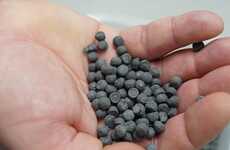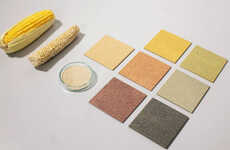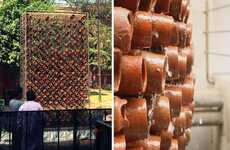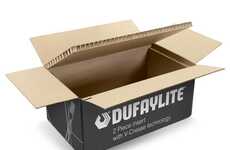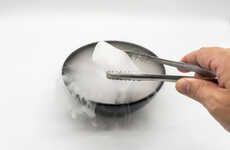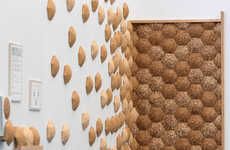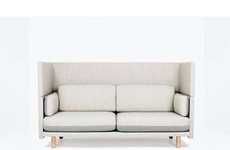
Universidad Politecnica de Madrid’s Drywall is Green
Universidad Politecnica de Madrid’s present drywall study introduces a sustainable means to moderate the temperature of buildings. The institute inserted small paraffin beads into the design and mixed the substance with average drywall material. The capacity of the combination to absorb and emit both cold and warm conditions was remarkable.
While the inclusion of these beads in drywall has been done in the past, and is indeed a fixture of contemporary science, Universidad Politecnica de Madrid took the concept further by producing a concoction made of 45% paraffin.
The loaded product was able to sufficiently cool and heat Spanish structures that vacillated between 68 to 86°F. Researchers on the project have consequently concluded that the concept can cut down on corporate energy consumption by up to 40%.
While the inclusion of these beads in drywall has been done in the past, and is indeed a fixture of contemporary science, Universidad Politecnica de Madrid took the concept further by producing a concoction made of 45% paraffin.
The loaded product was able to sufficiently cool and heat Spanish structures that vacillated between 68 to 86°F. Researchers on the project have consequently concluded that the concept can cut down on corporate energy consumption by up to 40%.
Trend Themes
1. Sustainable Drywall - Introducing paraffin beads into drywall materials to moderate building temperature presents disruptive innovation opportunities for sustainable housing and construction industries.
2. Thermal Regulation Materials - Developing building materials that can absorb and emit both cold and warm conditions presents disruptive innovation opportunities for the HVAC industry and energy-efficient building design.
3. Paraffin-based Products - Exploring the potential uses of paraffin beads beyond drywall could lead to disruptive innovation opportunities for the materials science industry and sustainability-minded companies.
Industry Implications
1. Construction - Incorporating sustainable drywall materials that can reduce corporate energy consumption could disrupt the traditional construction industry.
2. HVAC - Developing thermal regulation materials that can reduce energy consumption presents disruptive innovation opportunities for the HVAC industry and could change the way HVAC systems are designed and utilized.
3. Materials Science - Exploring the potential uses of paraffin beads beyond drywall presents disruptive innovation opportunities for the materials science industry and sustainability-focused companies.
1.5
Score
Popularity
Activity
Freshness


